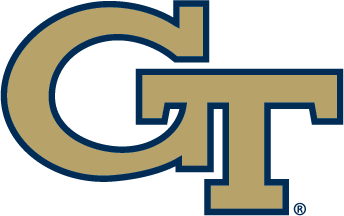April 20, 2013
By Jon Cooper
Sting Daily
There are many traditions and countless memories surrounding Georgia Tech football.
Many of these traditions have been born and memories taken place on Grant Field.
In 2013, Grant Field, itself, will get its turn to take center stage, as the facility celebrates its 100th anniversary of being the home of Yellow Jackets football.
As with Tech football, the stadium is rich in tradition an lore.
Football was first played on the ground that makes up Grant Field all the way back in 1905, back when the team referred to itself as “The Engineers.”
It wasn’t until 1913 that Grant Field really took shape, courtesy of the sweat of Tech students, who built the first stands — those stands are still in existence underneath the current West stands. Those bleachers held 5,600 fans — one-tenth of the current capacity the stadium
Grant Field is the oldest on-campus stadium in NCAA Division I-A (FBS) and the third-oldest among stadiums in all of college football. Only Penn’s Franklin Field, which opened in 1895, and Harvard Stadium, which opened in 1903, have been open longer.
The field was officially be named for Hugh Inman Grant, the son of longtime school trustee John Grant, who died at age 10, on Nov. 18, 1916 — coinciding with what would have been Hugh’s 21st birthday, and Grant would help finance another expansion, this time adding seats to the east side of the stadium, which would be completed in time to start the 1924 season.
There would be several more expansions, starting prior to the start of the ’25 season, when the south stands were built, boosting attendance to 30,000, where it would stay until after World War II.
In 1947, the West stands were rebuilt, raising capacity to 40,000 and a press box was added. The stadium would undergo further expansion in 1958, adding the North stands, then, in 1967, a second deck was added to the West stands. In 1985, the south stands were torn down and replaced by the William C. Wardlaw Center, then in 1992, executive suites were added, the President’s Box and press box were renovated and the Roy Richards Festival concourse area was added to the area under the West Stands.
Expanding the facility to fit the demand of the fans hasn’t been the only change to Grant Field. There have been several surface changes, including the use for nearly a quarter century of Astroturf (1971 through 1995) and variations thereof (All-Pro Turf was installed in 1988) before natural grass was installed in 1995 and it even underwent a name change to Bobby Dodd Stadium at Grant Field in April of 1988.
Regardless of expanding fan capacity, the surface, and even what it was called, the facility, has always been about the games.
Some of those drew crowds that even with the expansion to its current 55,000-fan limit, required a stretching of the limits the stadium could hold. Tops among those games was Dec. 1, 1973 game against Georgia, which drew a record 60,316.
Tech lost that day, but there were plenty of memorable victorious days, especially over Georgia.
On Nov. 26, 1959, Coach Bobby Dodd’s squad pulled out a 7-6 victory over UGA, kicking off what would become known as “The Drought,” as Dodd’s Yellow Jackets would win the annual rivalry each of the next eight years, seven times holding the Bulldogs under 10 points and giving up a total of 35 points.
Georgia, of course, wasn’t the only team to have tasted defeat at Grant Field since the field-opening 19-0 win over Ft. McPherson on Sept. 27, 1913.
Georgia Tech heads into the 2013 season with an all-time record of 447-187-21 on Grant Field, a .698 winning percentage, and has sustained its success, never suffering a losing decade. The closest Tech came was the 1980s, when the Jackets broke even, 30-30-2.
But that decade was the exception. Over the years, Grant Field has provided a tremendous home field advantage, as the Jackets have made runs of 23 straight home wins from 1915 through 1919, a 37-game unbeaten streak from 1914 through 1919. In the modern era, Tech has had a pair of 17-game win streaks (1951-54, 1989-91) and a 22-game unbeaten streak (1950-54).
While there have been too many memorable games to count, there are some that stand out in the pantheon of college football. Among them is the historic 222-0 wipeout of Cumberland College on Oct. 17, 1916, under legendary coach John Heisman. It remains the highest scoring game — and needless to say, the most lopsided victory — in college football history.
On the other end of the spectrum, Dodd’s Jackets took home a 7-6 victory over No. 1 Alabama, on Nov. 17, 1962, a game Dodd said later was “my greatest victory.”
Heisman and Dodd are just two of the giants that coached on Grant Field, and drew up X’s and O’s for some of the legends that played for the Yellow Jackets, and put on some of the most memorable performances in school and college football history.
The Georgia Tech Athletic Association will soon release a logo commemorating the 100th Anniversary of Grant Field, which was re-named Bobby Dodd Stadium at Historic Grant Field in April, 1988.
During the course of the 2013 season Sting Daily will take a closer look at some of the field’s most memorable players, coaches, games and moments.









